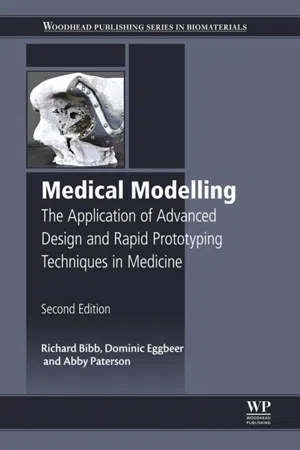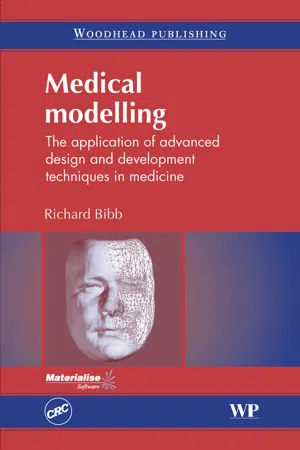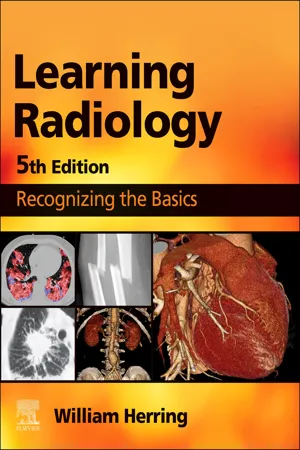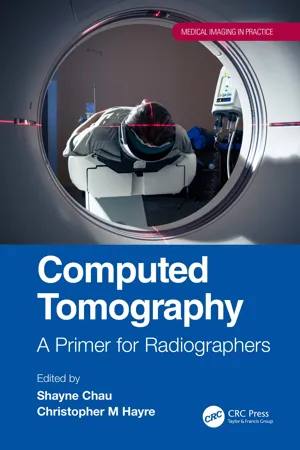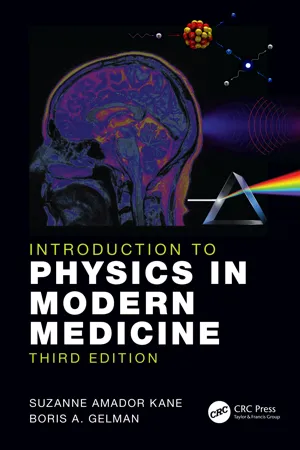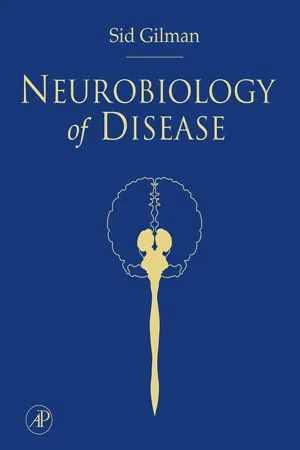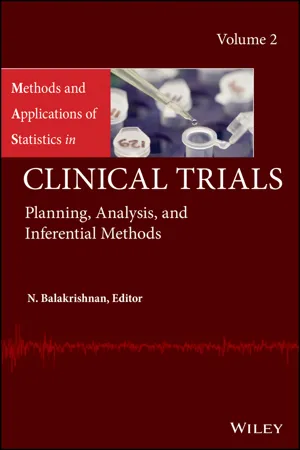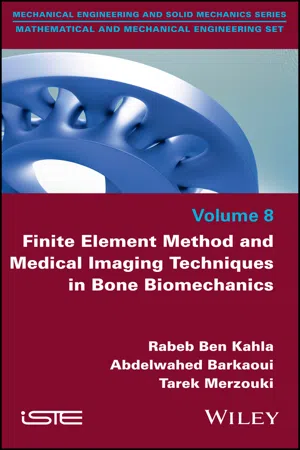Biological Sciences
CT Scan vs MRI
CT scans and MRIs are both medical imaging techniques used to visualize the internal structures of the body. CT scans use X-rays to create detailed cross-sectional images, providing excellent visualization of bone and dense tissues. MRIs use magnetic fields and radio waves to produce detailed images of soft tissues, organs, and the brain. Each imaging modality has its own strengths and is used based on the specific clinical needs of the patient.
Written by Perlego with AI-assistance
Related key terms
Related key terms
1 of 4
Related key terms
1 of 3
11 Key excerpts on "CT Scan vs MRI"
- eBook - ePub
Radiology Secrets Plus
Radiology Secrets Plus E-Book
- Drew A. Torigian, Parvati Ramchandani(Authors)
- 2016(Publication Date)
- Elsevier(Publisher)
Molecular imaging allows for the noninvasive functional and molecular characterization of normal tissues and disease processes of interest, even when morphologic changes in tissues have not yet occurred. Structural imaging (such as with radiography, computed tomography [CT], magnetic resonance imaging [MRI], and ultrasonography [US]) allows for the noninvasive anatomic assessment of normal tissues and disease conditions based on morphologic and gross functional alterations that occur. Molecular imaging techniques typically have higher contrast resolution (i.e., the ability to distinguish between differences in image intensity) and lower spatial resolution (i.e., the ability to distinguish two adjacent structures as being separate) compared to structural imaging techniques. As such, molecular imaging and structural imaging techniques are complementary.4. What is the difference between x-rays used in radiography and CT and gamma rays used in nuclear medicine techniques?X-rays and gamma rays are both types of ionizing electromagnetic radiation (i.e., they are photons that are energetic enough to remove electrons from other atoms or molecules) with wavelengths shorter than those of visible light. X-rays are emitted by electrons located outside of the nucleus of an atom, whereas gamma rays are emitted by unstable nuclei within atoms and have higher energies than x-rays. Diagnostic x-ray imaging is referred to as transmission imaging, since images are formed by the transmission of x-ray photons from an external source (outside the patient) through the patient to external detectors. Nuclear medicine imaging is referred to as emission imaging because images are formed by the emission of gamma ray photons from an internal source (inside the patient) through the patient to external detectors.5. What is radioactivity, and when was it discovered?Radioactivity (i.e., radioactive decay) is the process by which unstable atoms that do not have sufficient binding energy to hold their nuclei together emit ionizing radiation, and it occurs in exponential fashion. Alpha decay occurs when an alpha particle (identical to a helium nucleus) is emitted. Beta decay occurs when a beta particle (such as a positron) is emitted. Gamma decay occurs when a gamma ray is emitted during transition of an atomic nucleus to a lower energy state. Henri Becquerel discovered spontaneous radioactivity from uranium in 1896, and Pierre and Marie Curie discovered radium and polonium in 1898. As a result, all three received the Nobel Prize in Physics in 1903. - eBook - ePub
Medical Modelling
The Application of Advanced Design and Rapid Prototyping Techniques in Medicine
- Richard Bibb, Dominic Eggbeer, Abby Paterson(Authors)
- 2014(Publication Date)
- Woodhead Publishing(Publisher)
MRI exploits the phenomenon that all atoms have a magnetic field that can be affected by radio waves. Atoms have a natural alignment and MR works by using powerful radio waves to alter this alignment temporarily. When the radio waves are turned off, the atoms return to their natural alignment and release the energy they absorbed as radio waves. To construct an MRI, the strength of the radio waves emitted by the atoms is measured at precise locations. By collecting signals from many locations, a cross-sectional image can be created. As in CT scanning the resulting cross-sectional image is a grey scale pixel image, the shade of grey being proportional the strength of the signal.Figure 2.15 A typical magnetic resonance imaging through the abdomen.As the human body is composed mostly of water, MRI scanning targets the hydrogen nuclei present in water molecules. Therefore, locations that have a high water content show up in lighter shades of grey and areas containing little or no water show up darker. For example, air shows up black as will the densest bone, whilst tissues highest in water content, such as fat, will show up white.As the water content of different soft tissues differs, MRI is an excellent modality for investigating the anatomy of soft tissue organs, as can be seen in a typical MRI of the abdomen shown in Figure 2.15 . However, unlike CT, MRI is not good for visualising bone. The boundary between air and soft tissue is also good, allowing models to be made of the skin surfaces of patients. Unlike CT, by altering the direction of the radio waves used, MRI can be acquired in cross-sectional slices at any angle. MRI also differs from CT scanning in that there are more parameters that can be altered to improve the results for specific tissues. It is therefore important that the radiographer knows precisely which tissue type is being targeted before conducting the scans.Due to the strong magnetic fields encountered during MRI, the presence of metal may cause problems. Therefore, jewellery and watches must be removed and patients’ notes must be checked to ensure that they do not have attached or implanted devices that may be adversely affected. As with CT scanning, movement will lead to distorted images and babies, small children and claustrophobic patients may require sedation or anaesthesia. MRI scanners also generate an enormous amount of noise, which even with ear protection is not pleasant for the patient. - eBook - ePub
- Arvind Kumar Bansal, Javed Iqbal Khan, S. Kaisar Alam(Authors)
- 2019(Publication Date)
- Chapman and Hall/CRC(Publisher)
Combinations of X-rays and computer-based analysis of multiple images taken from different angles are combined to generate 3D-image of an organ. In CT, both X-rays and computer processing of multiple two-dimensional images are combined to derive a 3D image of the region-of-interest. CT has been used to localize the abnormalities in three-dimensional space. Image reconstruction techniques in CT technology use inverse Fourier 2D-transform that takes combination of multiple Fourier-transforms of one-dimensional projections to build a 2D cross-sectional image. One of the major concerns of radiation-based technology is the radiation overdose that has the potential to cause life-threatening malignancies.MRI is based upon the variation of emitted RF by excited protons in water molecules within soft-tissues that return to the normal states after the removal of the external magnetic field. The protons in water molecules are excited when an external magnetic field is applied, and emits RF when external magnetic field is removed. There are two types of relaxations: 1) water molecules returning to thermal equilibrium and 2) loss of coherence of magnetic alignment of protons. The relaxations decay exponentially. The second relaxation-time is much smaller than the first relaxation time, and plays a major role in the measurement. Since the relaxation-times of healthy tissues and abnormal tissue vary significantly, the measured difference is used to identify abnormal tissues. To localize a specific point in three-dimensional space in a soft tissue, linear magnetic field gradients are applied dynamically in addition to the static magnetic-field. This allows the position to be uniquely coded by the resonance frequency (frequency encoding). MRI has high resolution, and has been used to record three dimensional details of human organs such as brain, heart, kidney and liver.Ultrasound imaging is based upon the scattering of the emitted acoustic pulses in 1–20 MHz range while propagating through the tissue. It provides good image quality and resolution without a risk of radiation exposure. Ultrasound waves are reflected differently from different tissue layers due to different acoustic impedances of tissue layers. The measurement of the received echo is used to identify various soft-tissue layers. An ultrasound equipment consists of a transmitter and a receiver (typically within the same transducer). Ultrasound is not good for the tissues enclosed inside bones such as brain tissue because most of the signal gets reflected from the bones, and there is insufficient intensity of the waves reaching the soft tissues embedded inside the bones. - eBook - ePub
Medical Modelling
The Application of Advanced Design and Development Techniques in Medicine
- Richard Bibb, Dominic Eggbeer, Abby Paterson(Authors)
- 2006(Publication Date)
- Woodhead Publishing(Publisher)
It is not intended to provide a definitive description of the technology and practice of each scanning modality here but to establish some criteria and guidelines that may be employed to optimise their use in the production of virtual or physical medical models. Many texts are available that describe each modality fully and some are listed in the recommended reading list at the end of this chapter.2.2 Computed Tomography (CT)
2.2.1 Background
Computed Tomography works by passing focused X-rays through the body and measuring the amount of the X-ray energy absorbed. The amount of X-ray energy absorbed by a known slice thickness is proportional to the density of the body tissue. By taking many such measurements from many angles the tissue densities can be composed as a cross-sectional image using a computer. The computer generates a grey scale image where the tissue density is indicated by shades of grey, ranging from black indicating the density of air to white representing the density of the hardest bone.As bones are much denser than surrounding soft tissues they show up very clearly in CT images, as can be seen in Fig. 2.1 . This makes CT an important imaging modality when investigating skeletal anatomy. Similarly, the density difference between soft tissues and air is great allowing, for example, the nasal airways to be clearly seen. However, the density difference between different soft tissue structures is not great and therefore it may be difficult to distinguish between different adjacent organs in a CT image. Artificial contrast agents that absorb X-ray energy may be introduced into the body, which makes some structures stand out more strongly in CT images.2.1 A CT image of the head.As CT uses ionising radiation in the form of X-rays, it is called a noninvasive modality, but exposure should be minimised, particularly to sensitive organs such the eyes, thyroid and gonads. The X-rays are generated and detected by a rotating circular array through which a moving table can travel. Typically, the patient lies on their back and is passed through the circular aperture in the scanner. The detector array acquires cross sections perpendicular to the long axis of the patient. The images acquired are, therefore, usually termed the axial or transverse images. - eBook - ePub
- William Herring(Author)
- 2022(Publication Date)
- Elsevier(Publisher)
20: Magnetic Resonance Imaging
Understanding the Principles and Recognizing the BasicsDaniel J. Kowal, MD- • Magnetic resonance imaging (MRI) is a diagnostic modality capable of producing both anatomic and physiologic data that utilizes the molecular composition of tissues, especially water, to generate images with extraordinary contrast between soft tissues, surpassing the sensitivity of other imaging modalities.
- • To achieve this sensitivity, MRI studies are designed using specific scanning protocols based on the clinical question that allows the signal from certain tissues to be maximized while minimizing competing signal from other tissues.
- • Some understanding of these protocols is necessary to comprehend how these contrast differences are generated and then to recognize what imaging protocol was used in order to correctly interpret the images.
How MRI Works
- • MRI uses a very strong magnetic field to manipulate the electromagnetic activity of atomic nuclei in a way that releases energy in the form of radiofrequency signals, which are recorded by the scanner’s receiving coils and then computer-processed to form an image.
-
- • Clinical MRI scanners utilize the properties of hydrogen nuclei (which contain one proton) due to their abundance in the human body.
-
• Each proton has a positive electrical charge, and because protons also have a
spin,
this charge is constantly moving. You might remember that a moving electrical charge is also an electrical current, and because an electrical current
Case Quiz 20 QuestionThis patient is a 61-year-old female who presented with a large mass in her anterior left thigh that could not be fully characterized by ultrasound. These are both axial T1-weighted images, but what additional technique was added to the sequence in (B), and how does that help us make the diagnosis? The answer is at the end of this chapter.
- eBook - ePub
Computed Tomography
A Primer for Radiographers
- Shayne Chau, Christopher M Hayre, Shayne Chau, Christopher M Hayre(Authors)
- 2022(Publication Date)
- CRC Press(Publisher)
These two people shared the 1979 Noble Prize in medicine and physiology for their work in developing CT. Since then, both the clinical uses and technological advances of CT have rapidly grown. CT is now widely recognized as an important clinical imaging tool used in the diagnosis of many patients’ clinical conditions and that CT can also assist in the management and treatment of many medical conditions. This chapter will provide a brief overview of the physical principles and the technical aspects of CT. CT operators, whether diagnostic radiographers/radiological technologists or other clinical users, must have a solid understanding of the physical principles and technical aspects of CT. CT has the potential to deliver high ionizing radiations dose to the patient being scanned and CT, as a diagnostic imaging modality, delivers more radiation dose than any other clinical imaging modality. More details on radiation dose from CT are found in Chapter 3. CT scanning parameters need to be optimized in relation to obtaining the highest possible image quality at the lowest possible radiation dose. Given these important considerations, CT radiographers/radiological technologists and other CT operators must not just be button pushers or blindly follow pre-setup scanning protocols, they must understand how all scanning and image reconstruction parameters link together to enable optimized imaging for the benefit of their patients. Why Computed Tomography? CT acquires axial images or images in the transverse plane of the body. Figure 2.1 shows the orientation of an axial image through a patient that is lying supine on the CT table. More details will follow on how axial images are acquired. However, from these CT axial images, images in other planes and 3D representations of the body can be reconstructed and displayed. CT used to be called computerized axial tomography or CAT scans - eBook - ePub
Engineering-Medicine
Principles and Applications of Engineering in Medicine
- Lawrence S. Chan, William C. Tang(Authors)
- 2019(Publication Date)
- CRC Press(Publisher)
According to a survey among physicians, magnetic resonance imaging (MRI) and computed tomography (CT) are ranked the most important innovations over the past decades (Medscape 2001). Since their initial demonstrations in the early 1970’s (Lauterbur 1973, Peeters et al. 1979), these two medical imaging modalities have not only revolutionized diagnostic radiology but also modernized other disciplines in biomedicine. Compared to CT, MRI features a number of additional advantages, including exquisite soft tissue contrast for visualizing anatomic structures, versatility in contrasts to reveal tissue physiologic, metabolic, and functional changes, and absence of harmful ionizing radiation. MRI also provides a fertile ground where engineers, scientists, mathematicians, and clinicians interact closely with each other to invent and innovate for improving human health. After more than four decades of development, MRI has become an indispensable tool in clinical diagnosis, treatment monitoring, as well as in biomedical research.The goal of this chapter is to employ MRI as an example to illustrate how physics and engineering principles can be applied to medical imaging. A significant emphasis is placed on MRI signal generation and detection, spatial encoding and decoding, spatiotemporal resolution, and various contrast mechanisms. Throughout the chapter, we will present selected examples of MRI application and instrumentation. Given the depth and breadth of MRI technologies and the broad scope of their applications, it is not possible to thoroughly cover all facets of MRI in this chapter. In spite of this, it remains our intention to provide sufficient motivation for medical students to embrace physics and engineering principles to enhance their career as clinicians, and for engineering and science students to develop novel technologies with a focus on solving important biomedical problems.MRI Signals
Origin of the Signal
In the human body, although hydrogen accounts for only ~ 9.5% of the body weight, its atomic percentage (63%) is much higher, far exceeding that of oxygen (26%) and carbon (9%) (Frausto Da Silva and Williams 2001). The vast majority of hydrogen atoms are in water, although many other molecules such as triglycerides (lipids) and proteins are also rich in hydrogen. The nucleus of a hydrogen atom contains a single proton surrounded by an electron. Similar to the electron, the proton spins with a specific angular frequency. This spinning property is often termed as proton spin, or more generally, nuclear spin or simply spin (Note that a neutron also spins). Within an imaging voxel of 1 × 1 × 1 mm3 of a representative biological tissue, approximately 1019 proton spins may coexist. Each spin produces a tiny magnetic momentμ →, which is randomly distributed in the absence of any external magnetic field (Fig. 1a ). Because of the random orientation, individual magnetic moments within the voxel cancel each other, producing no net magnetization. When an external magnetic fieldis applied, the spins will align either parallel or anti-parallel to theB →0field (Fig. 1b ), ending their random orientation. Quantum mechanically, the parallel and anti-parallel proton spins are denoted as ½ and − ½ spins, respectively. The ½ spins have a lower energy than −½ spins, as shown in Fig. 1cB →0 - eBook - ePub
- Suzanne Amador Kane, Boris A. Gelman(Authors)
- 2020(Publication Date)
- CRC Press(Publisher)
Solenoid-type scanners present another practical problem – the discomfort experienced by many from the tunnel-like environment and noise. As mentioned earlier, MRI scanner manufacturers now market “open MRI” scanners designed with more sensitivity to the user’s situation. Modern scanners incorporate a clearer field of view (which can be accomplished with a mirror positioned before the patient’s face), relaxing music, and less confining geometries. The open MRI scanners present an alternative for imaging small children, the critically ill, or other persons who cannot tolerate confinement. They also permit interventional procedures to be performed simultaneously with the actual imaging.8.8 Creating Better ContrastNow that we have a basic understanding of how MRI scanners operate, we can investigate its special diagnostic capabilities. Many of the advantages MRI offers have been mentioned earlier in the chapter: MRI can flexibly image in any plane; the different methods of weighting images can yield better soft-tissue contrast than can CT; it does not use ionizing radiation; contrast agents for MRI are safer than those used in x-ray imaging; bone and air-filled spaces do not obscure other tissues; and MRI promises to offer superior capabilities for imaging the major blood vessels, even in three dimensions.One of the chief beauties of MRI is that it often does not require introducing foreign contrast media into the body, because many body tissues can be distinguished by their proton densities or T1 or T2 relaxation times. In a sense, naturally occurring body chemicals containing nuclei with a total nonzero spin play the role of radioactive tracers in radionuclide imaging. However, even with MRI, contrast agents are desirable in a large range of applications, principally to provide additional information when imaging body function.Remarkably, blood itself can serve as an effective contrast agent. Blood in the circulatory system picks up fresh oxygen as it passes through the lungs. The heart then pumps the blood through the arteries to supply body tissues with the oxygen needed to convert food into energy. Finally, the oxygen-depleted blood returns to the heart via the veins. The blood protein hemoglobin, responsible for ferrying oxygen throughout the body, contains an iron atom that binds oxygen. The magnetic properties of this iron atom depend substantially upon whether the hemoglobin is bound to oxygen (oxyhemoglobin, which is not paramagnetic), or is not bound to oxygen (deoxyhemoglobin, which is - eBook - ePub
- (Author)
- 2011(Publication Date)
- Academic Press(Publisher)
73 Magnetic Resonance ImagingJohn A. Detre, MDKeywords: brain • diffusion • magnetic resonance imaging • molecular imaging • perfusion • spinal cord • relaxationI. History of Magnetic Resonance ImagingII. Magnetic Resonance Imaging HardwareIII. Basic Principles of Magnetic Resonance ImagingIV. Image AnalysisV. Basic Clinical Magnetic Resonance ImagingVI. Perfusion and Diffusion Magnetic Resonance ImagingVII. Other Sources of Image Contrast in Proton Magnetic Resonance ImagingVIII. Exogenous Contrast AgentsIX. Imaging Nuclei Other Than ProtonsX. ConclusionReferencesHigh-quality imaging of the central nervous system (CNS) is more challenging than in other organs because the brain and spinal cord are soft tissue encased in dense bony structures. Although even routine x-ray can provide diagnostic information about organs in the torso, only limited inferences can be drawn about the brain from skull x-rays, primarily based on asymmetries or shifts in the location of a few possibly calcified structures. Computed tomography (CT) revolutionized the assessment of the CNS, providing sufficient dynamic range to visualize brain tissue within the skull—albeit with careful windowing with respect to bone, which is much denser than nervous tissue, dominates the signal, and often degrades image quality in the brainstem and spinal cord where the ratio of tissue to bone is reduced. CT scanning remains an important modality for rapid assessment of the CNS (e.g., head trauma), though tissue contrast in CT is limited to changes in tissue density and enhancement following exogenous contrast administration.Magnetic resonance imaging (MRI) currently is the most versatile and informative imaging modality for the CNS. There are a variety of reasons for this. First, MRI is detected as radio frequency (RF) signals that can penetrate the skull and spinal column without degradation. Second, the hardware used to generate MRI scans allows tremendous flexibility in imaging orientation and spatial resolution. Finally, there are numerous sources of image contrast that contribute to the characterization of structure, function, and lesions of the CNS. Some of these capabilities are covered in chapters on functional MRI and magnetic resonance spectroscopy (MRS) in this text. - eBook - ePub
Methods and Applications of Statistics in Clinical Trials, Volume 2
Planning, Analysis, and Inferential Methods
- Narayanaswamy Balakrishnan, N. Balakrishnan(Authors)
- 2014(Publication Date)
- Wiley(Publisher)
Chapter 14 Imaging Science in Medicine, II: Basics of X-Ray Imaging Anthony B. Wolbarst, Patrizio Capasso and Andrew R. Wyant 14.1 Introduction to Medical Imaging: Different Ways of Creating Visible Contrast Among Tissues The principal job of a medical imaging modality is to provide clear maps of anatomy, or to make it possible to recognize irregularities in physiology, or both— ultimately, that is, to help find and identify pathologies. It does so by creating contrast among tissues, and the various modalities do this in biophysically diverse ways. This chapter and Chapter 15 provide extremely brief sketches of the imaging technologies that involve X rays and are employed routinely in modern clinics to examine the structure and functioning of the body. This chapter covers the modalities that were slowly developed over the first three quarters of the twentieth century, like screen-film radiography and mammography, and image-intensifier tube fluoroscopy. Chapter 15 deals with X-ray technologies that have flourished only with the advent of high-speed but affordable computers—digital planar imaging like computed radiography (CR), digital radiography (DR), digital subtraction angiography (DSA), and computed tomography (CT), culminating in helical, multi-detector ring CT. A much expanded and more in-depth version of this material may be found in the book, Medical Imaging—Essentials for Physicians, by the authors, also published by Wiley (2013). The book also discusses modalities based on gamma rays rather than X rays, including single-photon emission computed tomography (SPECT) and positron emission tomography (PET); on ultrasound waves, namely, advanced forms of B-mode and Doppler US; and on the radio waves and magnetic fields of magnetic resonance imaging (MRI) in all its glory, with T1-, T2-, and proton density-weighted imaging, functional MRI (fMRI), MR angiography (MRA), diffusion tensor imaging (DTI), and other variants - Rabeb Ben Kahla, Abdelwahed Barkaoui, Tarek Merzouki(Authors)
- 2019(Publication Date)
- Wiley-ISTE(Publisher)
Magnetic resonance imaging Magnetic resonance imaging (MRI) is currently a major technique in the field of medical imaging, using magnetic fields about 10–60 thousand times stronger than the magnetic field of Earth (Bushberg and Boone 2011). This imaging technique is based on the principle of nuclear magnetic resonance (NMR), which enables imaging the nuclei of atoms, such as hydrogen, carbon, nitrogen, sodium and phosphorus, located inside the body (Miller et al. 2014). In most clinical cases, the used MRI focuses on imaging hydrogen nuclei (1H), since hydrogen is the most abundant atom in the human body, providing a relatively large magnetic moment. Indeed, the number of hydrogen atoms in the body exceeds 10 27 (Maier et al. 2018) and a typical MRI voxel contains about 10 21 (Haidekker 2013). NMR was first reported in 1946 and its use as an in vivo imaging technique, now known as MRI, dates back to the early 1970s. Conventional NMR was first used to study the chemical content of material. The development of modern MRI machines has since allowed the acquisition of a detailed depiction of the human body and the various contrasting soft tissues, representing a very important step forward in the field of medical imaging in the 20th Century (Miller et al. 2014; Maier et al. 2018). 1.4.1. Instrumentation The magnetic resonance system mainly consists of two equipment groups. The first is the control center, which is composed of a “host” computer with its graphical user interface. The associated electronic components and power amplifiers are generally located in an adjacent room and connected to the second equipment group. The latter is housed in the machine in which the patient is located (Figure 1.23), and includes the components generating and receiving the magnetic resonance signal, comprising a set of main magnetic coils, three gradient coils, compensation coils, as well as an integrated radiofrequency (RF) transmitter coil (Ridgway 2010)
Index pages curate the most relevant extracts from our library of academic textbooks. They’ve been created using an in-house natural language model (NLM), each adding context and meaning to key research topics.
Explore more topic indexes
Explore more topic indexes
1 of 6
Explore more topic indexes
1 of 4

